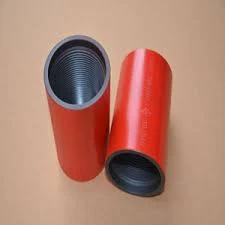- Afrikaans
- Albanian
- Amharic
- Arabic
- Armenian
- Azerbaijani
- Basque
- Belarusian
- Bengali
- Bosnian
- Bulgarian
- Catalan
- Cebuano
- Corsican
- Croatian
- Czech
- Danish
- Dutch
- English
- Esperanto
- Estonian
- Finnish
- French
- Frisian
- Galician
- Georgian
- German
- Greek
- Gujarati
- Haitian Creole
- hausa
- hawaiian
- Hebrew
- Hindi
- Miao
- Hungarian
- Icelandic
- igbo
- Indonesian
- irish
- Italian
- Japanese
- Javanese
- Kannada
- kazakh
- Khmer
- Rwandese
- Korean
- Kurdish
- Kyrgyz
- Lao
- Latin
- Latvian
- Lithuanian
- Luxembourgish
- Macedonian
- Malgashi
- Malay
- Malayalam
- Maltese
- Maori
- Marathi
- Mongolian
- Myanmar
- Nepali
- Norwegian
- Norwegian
- Occitan
- Pashto
- Persian
- Polish
- Portuguese
- Punjabi
- Romanian
- Russian
- Samoan
- Scottish Gaelic
- Serbian
- Sesotho
- Shona
- Sindhi
- Sinhala
- Slovak
- Slovenian
- Somali
- Spanish
- Sundanese
- Swahili
- Swedish
- Tagalog
- Tajik
- Tamil
- Tatar
- Telugu
- Thai
- Turkish
- Turkmen
- Ukrainian
- Urdu
- Uighur
- Uzbek
- Vietnamese
- Welsh
- Bantu
- Yiddish
- Yoruba
- Zulu
what is the difference between casing and tubing?
The Difference Between Casing and Tubing in Oil and Gas Industry
In the oil and gas industry, the terms casing and tubing are fundamental to understanding how wells are constructed and maintained. Both casing and tubing are essential components that serve distinct functions in the drilling process but are often confused due to their similar appearances and roles in well construction.
The Difference Between Casing and Tubing in Oil and Gas Industry
The casing process involves several critical steps. First, once the well is drilled to the desired depth, the casing string is lowered into the wellbore. Next, it is cemented in place, which secures it within the rock formation and creates a barrier against unwanted fluid ingress. Casing must be robust enough to withstand the high pressures and temperatures that can exist deep underground, and various grades of steel are used based on the specific requirements of the well, such as size, environment, and pressure conditions.
what is the difference between casing and tubing?

On the other hand, tubing is the smaller-diameter pipe that is inserted into the casing. It serves as the conduit through which oil and gas are actually brought to the surface. The tubing is usually much thinner than casing and has less structural strength since it is primarily designed to transport fluids rather than support the wellbore itself. Tubing is critical for production operations. It allows operators to efficiently extract hydrocarbons and manage well pressures while also providing the flexibility to implement various downhole technologies, such as pumps and artificial lift systems.
One of the key distinctions is that tubing can be removed and replaced as needed, while casing is typically a permanent fixture, cemented into place to maintain well integrity. The ability to pull out tubing while leaving casing intact is essential for service interventions, repairs, and production enhancement techniques.
Moreover, the design and installation of casing and tubing vary significantly. Casing comes in multiple sizes and may have different types such as surface casing, intermediate casing, and production casing, each serving different depths and functions within a well. In contrast, tubing generally has a more standardized size to optimize production flow rates.
In conclusion, while both casing and tubing are integral to the successful operation of oil and gas wells, their roles are distinctly different. Casing acts as a protective structure that ensures well safety and integrity, while tubing functions as the means of oil and gas production. Understanding these differences is crucial for professionals in the industry to manage drilling and production operations effectively, leading to safer and more efficient extraction of hydrocarbon resources. As the industry continues to evolve, knowledge of casing and tubing will remain a cornerstone of drilling and production engineering.
-
Tubing Pup Joints: Essential Components for Oil and Gas OperationsNewsJul.10,2025
-
Pup Joints: Essential Components for Reliable Drilling OperationsNewsJul.10,2025
-
Pipe Couplings: Connecting Your World EfficientlyNewsJul.10,2025
-
Mastering Oilfield Operations with Quality Tubing and CasingNewsJul.10,2025
-
High-Quality Casing Couplings for Every NeedNewsJul.10,2025
-
Boost Your Drilling Efficiency with Premium Crossover Tools & Seating NipplesNewsJul.10,2025







